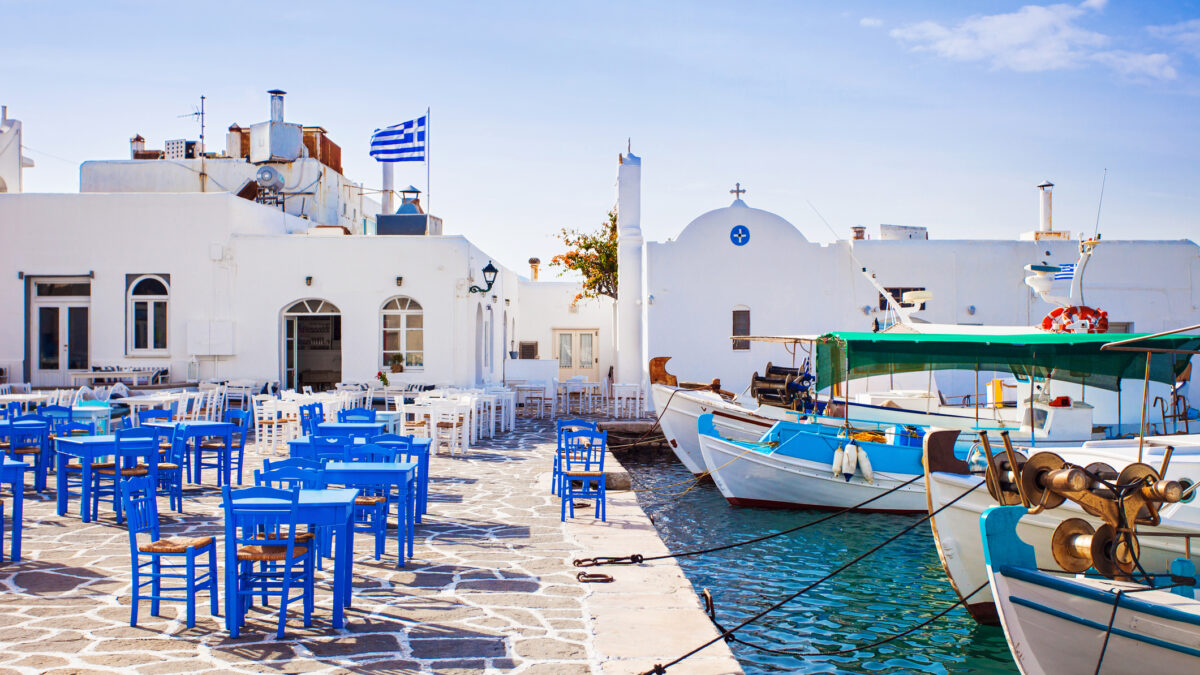Thanks to its central location in the Aegean, Paros was long a sought-after crossroads and has a rich history. Today, Paros is one of Greece’s most popular island destinations. This is primarily due to its picturesque beauty, striking beaches and premium services, a result of its rapid tourism development.
The island’s ancient quarries, established in the 7th century B.C. just outside of Parikia, supplied the famous white Parian marble which was used to sculpt some of antiquity’s most famous statues. Perhaps the most famous such statue is Aphrodite of Milos. It is easy to see just what a source of wealth this resource has been for the island through to the present day.
And indeed, today the island’s main settlement of Parikia is the top destination for visitors. The town is home to an impressive Venetian castle and the church of Panagia Ekatontapyliani or Katopoliani, one of Greece’s most important early Christian monuments. Naousa, with its natural harbour and classic Cycladic charm, is also a major tourist destination, thanks to the local commercial activity and cosmopolitan atmosphere. The verdant town of Lefkes is the exception to the island’s dry landscape. It is home to the majestic church of the Holy Trinity, one of the island’s many must-see monuments. Finally, the island is home to the Butterflies Nature Reserve, a Natura 2020 biotope similar to that of Rhodes and the habitat of a rare species of butterfly. Most of the island’s beaches feature striking golden sands, though there are a number of more rugged pebble beaches as well. The best-known among these are Golden Beach, Ampelas and Kolymbithres.
Cuisine
Even though it is a Cycladic Island, Paros possesses rich flora. Its fertile farmlands produce delicacies such as caper, rock samphire, figs, mushrooms, olive oil and honey, albeit in limited quantities. Paros and Santorini have the most storied wine-making traditions in the Cyclades. Paros itself produces Protected Designation of Origin (PDO) dry white and red wines, as well as the famous local Malvasia sweet wine. In addition to wine, the island produces spirits such as ouzo and the popular souma. The island has numerous wineries where visitors can learn about the local varieties of grape and the efforts of the island’s natives to increase its presence in the wine-making sector. The island’s cheeses are another major local product. Cheeses produced here – mostly from cow’s milk – are usually consumed on the island and not exported. Some of the most popular are graviera, kefalotyri, anthotyro and myzithra. As on other islands, the local sweets on Paros are based on cheese and/or honey filling. These include tsimbita, myzithra pies and pasteli. As far as traditional dishes go, it is worth sampling the festive stuffed lamb, known locally as patoudo (also known as Lambriatis on other islands), rabbit stifado, cuttlefish with greens and herbs, pies and the various recipes for local mushrooms. Finally, the island boasts a dazzling variety of delicious fresh fish and seafood.
How to get there
Paros is at the heart of the Cyclades and is easily accessible by ferry from the ports of Rafina and Lavrio as well as by air.










